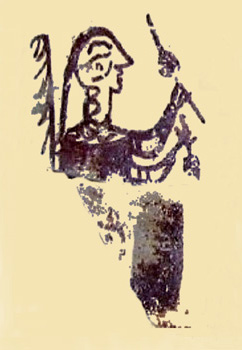Technology and production of reddish purple vegetable dye in the Bronze Age and Iron Age: written sources and textile remains in the Iberian Peninsula
 Abstract
Abstract
The knowledge of dyeing techniques dates back to very early times; colour has been an important part of the most ancient cultures. Red hue dyes, such as reddish purple, have played an important role as distinctive marks of social and religious status, especially since these may have been intimately connected to the symbolism and archetype of blood from prehistoric times.
Threads dyed in red shades have been found in some Neolithic settlements in the Middle East, in ancient Mesopotamia and at Charavines, Isère, France (c. 2450 BC). Due to their early date, there are no written sources which describe the exact nature of the colourants used for reddish purple ancient textile remains. It is likely that the inhabitants of the Iberian Peninsula, during the Bronze Age, also dyed their clothes in a reddish purple colour - as found with other Mediterranean cultures. Since no records of the raw material exist, we can only speculate about material used and the methods of extraction required to obtain such dyes. To develop an understanding of this process, this paper reviews the oldest written sources concerning these dyes, together with the information about the dyes obtained through dye analysis of the extant ancient textiles. These considerations leave little doubt that the natural dyes used for reddish purple dye were primarily of local origin and therefore autochthons to the Iberian Peninsula.
 Downloads
Downloads
Downloads
Pubblicato
Come citare
-
Abstract450
-
PDF 310
Fascicolo
Sezione
Licenza

Este obra está bajo una licencia de Creative Commons Reconocimiento-NoComercial-SinObraDerivada 4.0 Internacional.



